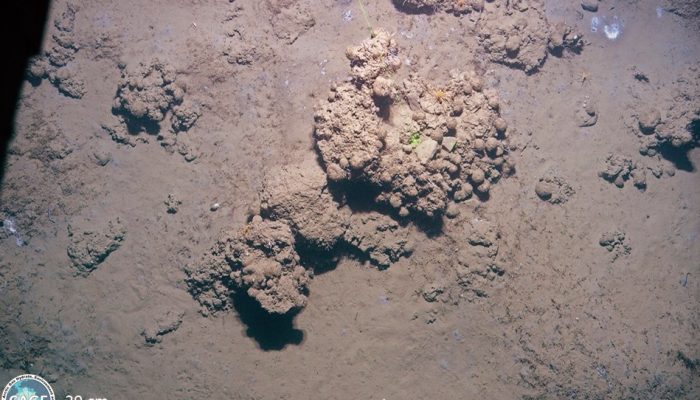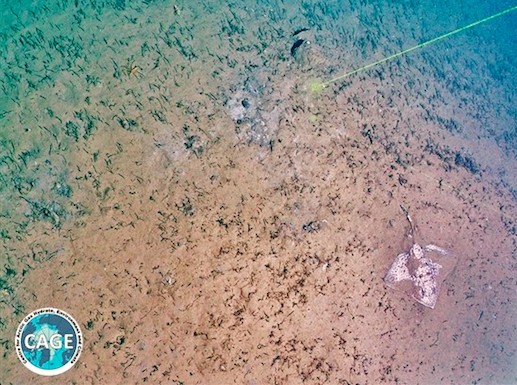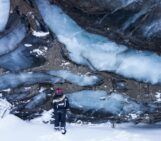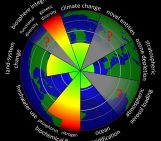
The deep Arctic Ocean is not known for its wildlife. 1200 metres from the surface, well beyond where light penetrates the water and at temperatures below zero, it it’s a desolate, hostile environment. There are, however, exceptions to this, most notably around seeps in the seafloor that leak methane into the water above.
Here, methane is the fuel for life, not sunlight, creating oases in an otherwise barren landscape. On the Vestnesa Ridge, just off Svalbard, great plumes of methane stretch some 800 metres above the seabed. These seeps occur within pockmarks, depressions in the sea’s soft sediment, which span hundreds of metres across. At their base lies carbonate reefs, wide microbial mats and thriving meadows of tubeworms, which stretch out into the current. The microbes turn the methane into something much more valuable – carbon, and form the base of the deep Arctic food chain.
Emmelie Åström, a PhD student from the Centre for Arctic Gas Hydrate, Environment and Climate, has been using high definition seafloor images to work out what effect these seeps have on the surrounding biota. The images reveal that the carbonate rocks that form at the seep’s margins create a unique habitat in an otherwise featureless environment. These structures provide shelter for a huge variety of animals, which benefit from a food chain fuelled by methane. She presented her results at the EGU General Assembly this week.

Just some of the many marine animals found around methane seeps. Credit: CAGE
The communities are totally different just tens of metres from the seep. Utterly dependent on the methane to survive, the animals of the deep Arctic Ocean stick close to their fuel.
“We took photos going from the outside of the pockmark inside and you can see how the seafloor is changing, also the animal distribution and aggregation. When you come inside a pockmark, the seafloor changes very dramatically,” explains Åström.
There are similarities between these seeps and others around the world, but none have been studied so high in the Arctic.
“The Arctic is a place where lots of things are happening right now and it’s important to understand what kind of animals are present here.”
By towing a camera across the sediment and taking samples to match, Åström was able to map out the marine life in these deep, dark oceans. “The typical view you have is that it’s very barren and that there’s not so many big animals here,” she says, but her images tell a different story. These vibrant patches may be separated by swathes of barren sediment, but they’re thriving, and may have an important role to play.
By Sara Mynott, EGU General Assembly Press Assistant and PhD Student at University of Exeter.
Sara is a science writer and marine science PhD candidate from the University of Exeter. She’s investigating the impact of climate change on predator-prey relationships in the ocean and is one of our Press Assistants this week at the Assembly.




